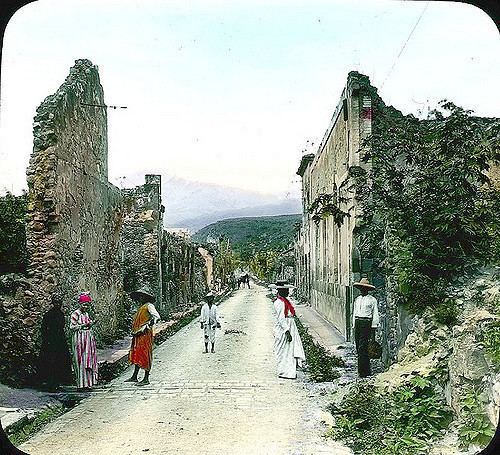INSEE/Postal code 97225 /97250 Area 38.72 km² | Population (2013) 4,344 Elevation 0–1,397 m (0–4,583 ft) Local time Tuesday 7:21 PM | |
 | ||
Weather 26°C, Wind SE at 5 km/h, 85% Humidity Points of interest Habitation Anse Latouche, Mount Pelée, Distillerie Depaz, Centre de Découverte des Scien | ||
Saint-Pierre is a town and commune of France's Caribbean overseas department of Martinique, founded in 1635 by Pierre Belain d'Esnambuc. Before the total destruction of Saint-Pierre in 1902 by a volcanic eruption, it was the most important city of Martinique culturally and economically, being known as "the Paris of the Caribbean". While Fort-de-France was the official administrative capital, Saint-Pierre was the cultural capital of Martinique. After the disaster, Fort-de-France grew in economic importance.
Contents
Map of Arrondissement of Saint-Pierre, Martinique
History
Saint-Pierre was founded in 1635 by Pierre Belain d'Esnambuc, a French trader and adventurer, as the first permanent French colony on the island of Martinique.
The Great Hurricane of 1780 produced a storm-surge of 8 metres (25 ft) which "inundated the city, destroying all houses" and killed 9,000 people.
Eruption of Mount Pelée
The town was destroyed again in 1902. when the volcano Mount Pelée erupted, killing 28,000 people, the entire population of the town as well as people from neighboring villages who had taken refuge in the supposedly safe city, save two people—a prisoner by the name of Louis-Auguste Cyparis (also known by various other names), who later toured the world with the Barnum and Bailey Circus, and Léon Compère-Léandre, a man who lived at the edge of the city. Legend (erroneously) has it that the town's doom was forecast by loud groaning noises from within the volcano, but the mayor of the town had it blocked off to prevent people from leaving during an election. This story appears to have originated with one of the island's newspapers, published by a political opponent of the governor. Actually, there was considerable eruptive activity in the two weeks prior to the fatal blast, but since the phenomenon of the pyroclastic flow (nuée ardente) was not yet understood, the danger was perceived to be from lava flows, which, it was believed, would be stopped by two valleys between the volcano and the city.
Today
The city of Saint-Pierre was never restored to its former entirety, though some villages were built in later decades on its place.
Today, the town is the district capital of the Caribbean North district of Martinique. It has been designated as a "City of Art and History". There are many historic remains, and a Volcanological Museum (Musée vulcanologique Franck Perret).
